June 29, 2017
What Shark Species Live in Canada’s Coastal Waters?
Estimated reading time: 0 minutes
BY: Oceana
Topics:
There have been recorded sightings of 28 different species of sharks in Canada, 14 of which are commonly found. They range from small black dogfish to much larger basking sharks. Read on to learn more about some of the incredible shark species found off the coast of Canada.
Blue shark (Prionace glauca)
Blue sharks are commonly found off of both the Pacific and Atlantic coasts. They are one of the most widespread and easily recognizable species of sharks, named after their beautiful blue colour. They have distinct indigo blue on their backs, vibrant sapphire blue along their sides and white underbellies.
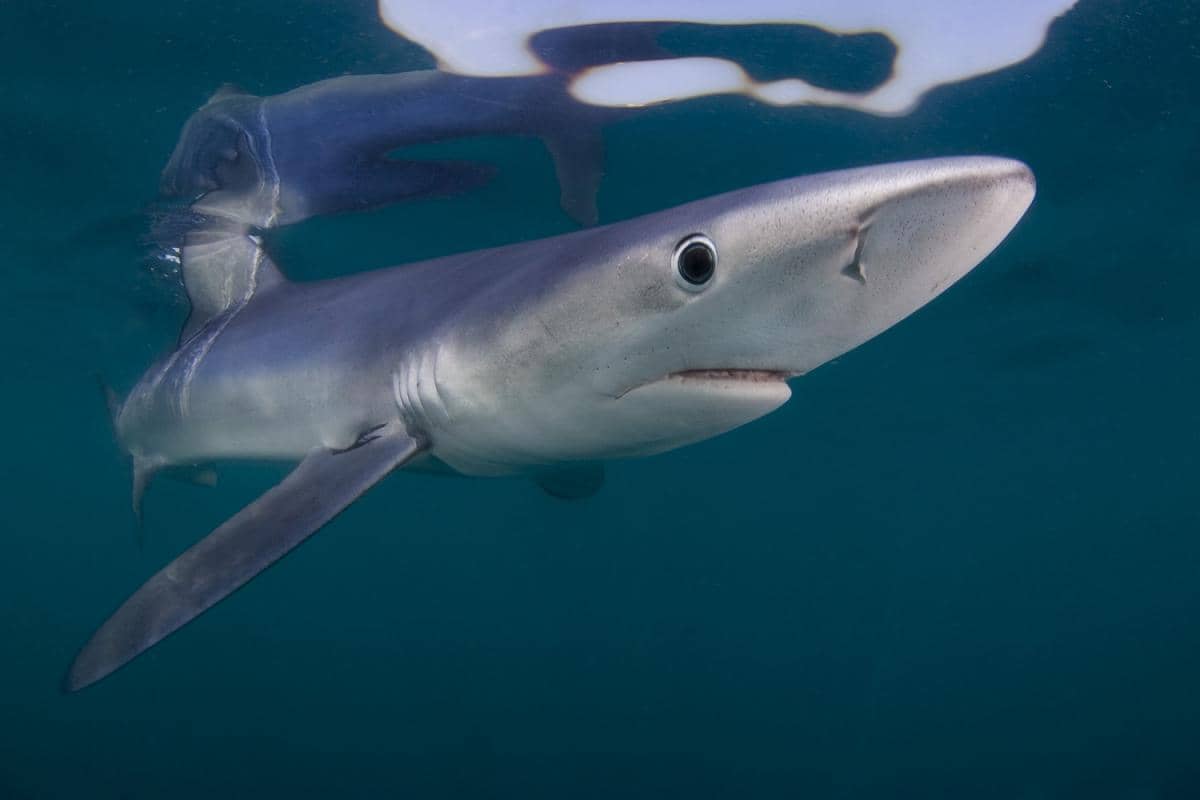
Spiny dogfish (Squalus acanthias) and Pacific spiny dogfish (Squalus suckleyi)
The spiny dogfish is thought to be the most abundant living shark, found throughout the oceans of the northern hemisphere. Recent studies have determined that the Pacific spiny dogfish is a genetically distinct subspecies, however it is indistinguishable from spiny dogfish, based on appearance. They are fairly small, measuring from 100-125 centimeters as adults and are aptly named because of their venom-producing spines.
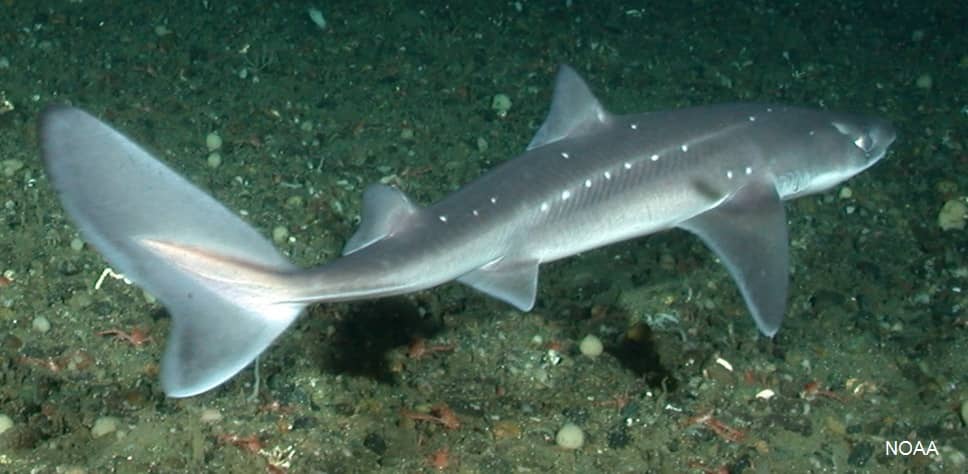
Porbeagle shark (Lamna nasus)
The porbeagle shark is fairly widespread and is one of the most cold-tolerant species of sharks in the world. They prefer waters that are less than 18 degrees Celsius along continental shelves and in the open sea, and can be found in Canada off of the Atlantic coast. Porbeagles are also one of several species of sharks that are considered “obligate ram ventilators”, along with makos and great white sharks. This means that they cannot actively pump water over their gills to breathe, so they have to be in constant motion. This action of swimming moves water over their gills, allowing them to breathe.
Greenland shark (Somniosus microcephalus)
The Greenland shark is another cold water-loving species, but prefers things to be extra frigid. It is the only species of shark that is able to tolerate the extreme cold waters of the North Atlantic and Arctic all year long. Greenland sharks will eat almost anything they can find, dead or alive, and are extremely slow-moving, tending to move at an average pace of 0.3 meters per second (0.76 MPH). Female Greenland sharks aren’t able to reproduce until they’ve reached over 100 years old, and new research suggests that Greenland sharks may be the longest living vertebrate animal – with one female recorded at around 400 years old!
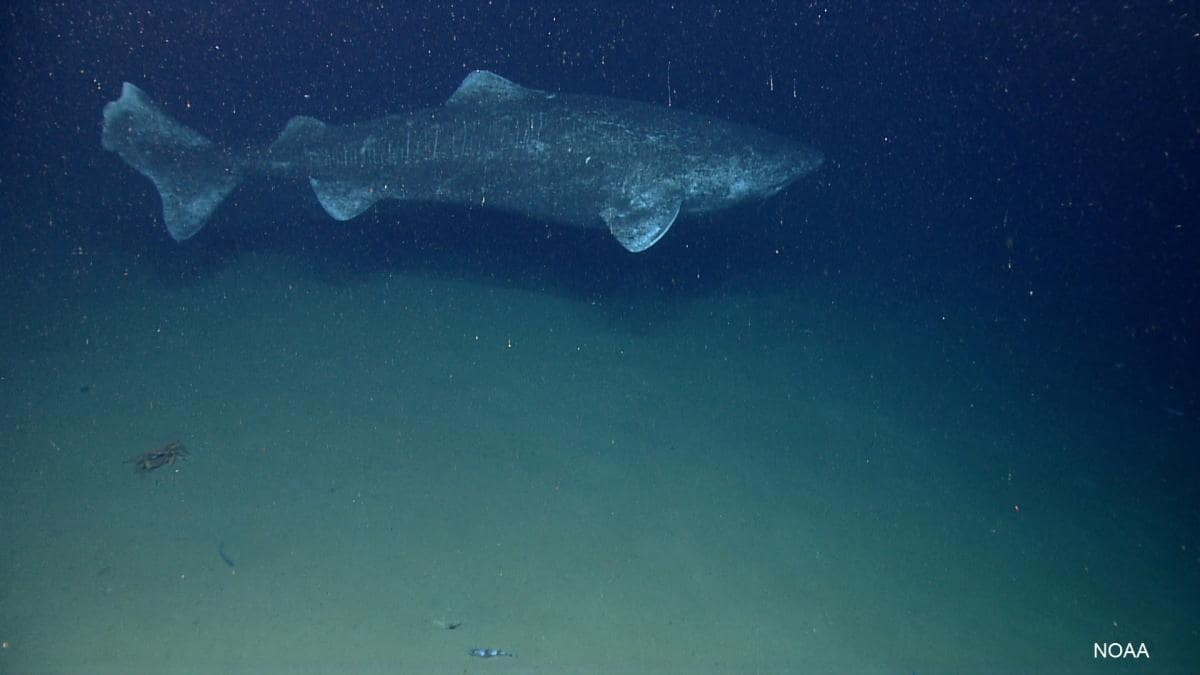
Common thresher shark (Alopias vulpinus)
The common thresher shark is found throughout the world’s oceans, but is most common in temperate waters. In the summer, they can be found off of Canada’s Atlantic coast and rare sightings have also been recorded off of the coast of British Columbia. The upper lobe of a common thresher shark’s tail fin is incredibly long and curved, making them one of the most easily recognizable sharks. This whip-like tail is used as a weapon to herd, stun and kill their prey, which are typically small fish like sardines and herring.
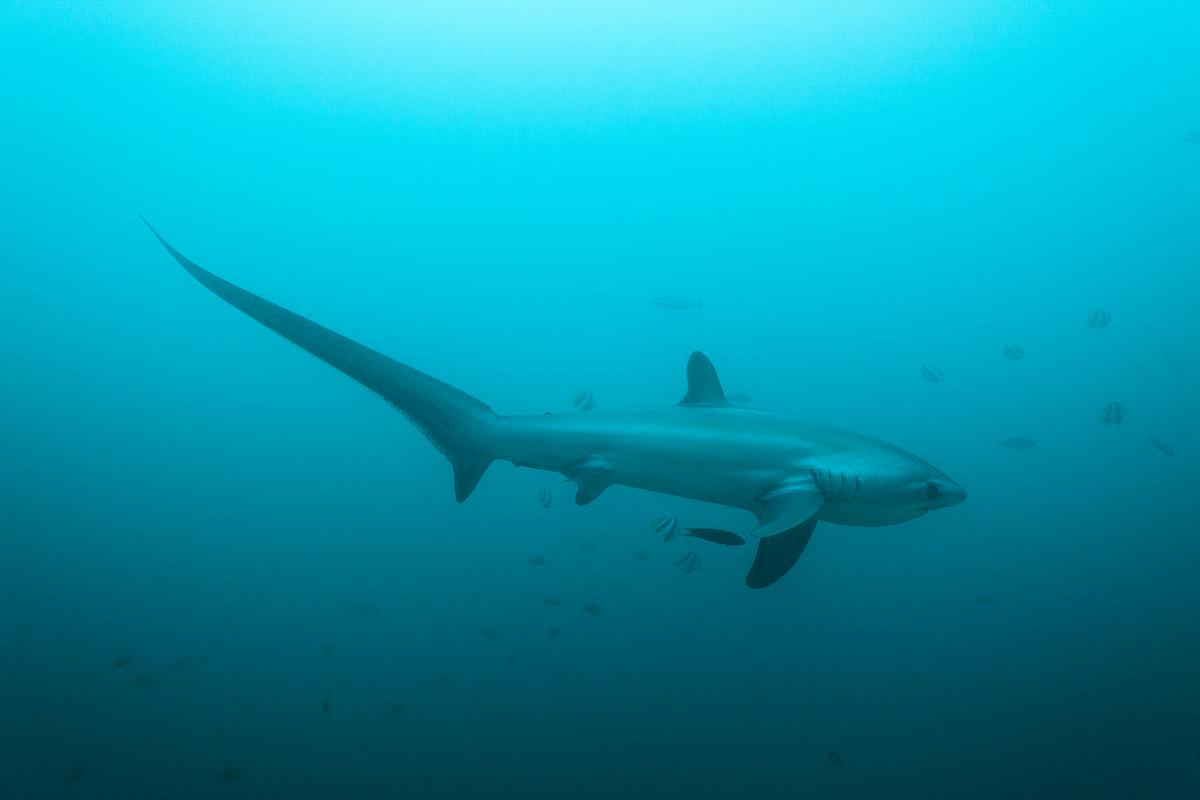
Deepwater catshark (Apisturus profundorum)
The deepwater catshark is found near the continental shelves in the north Atlantic in depths ranging from 1,100 to 1,750 meters. They are rarely seen and still largely remain a mystery, however it is believed that they are a common occurrence in the deep waters off of Canada’s Atlantic coast.
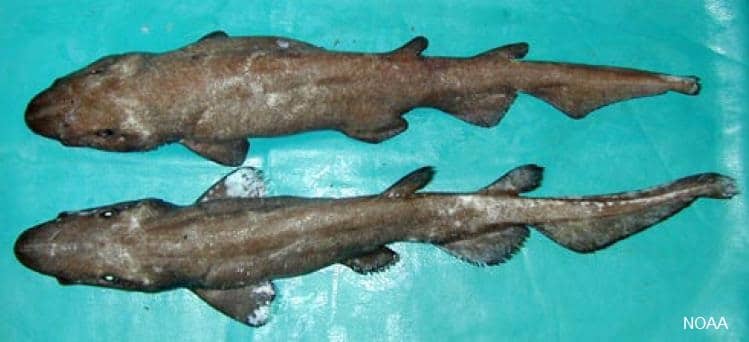
Shortfin mako shark (Isurus oxyrinchus)
Shortfin mako sharks are found in tropical and temperate waters throughout the world’s oceans. In the summer months, this large predatory shark will follow the warm waters of the Gulf Stream northwards to the Atlantic coast of Canada. They are the fastest shark in the world, able to reach speeds of 74 kilometers an hour (45 MPH). Shortfin makos’ athleticism is not restricted to their swimming speed: they are also famed for their incredible leaping abilities. They have been observed jumping up to six meters out of the water!
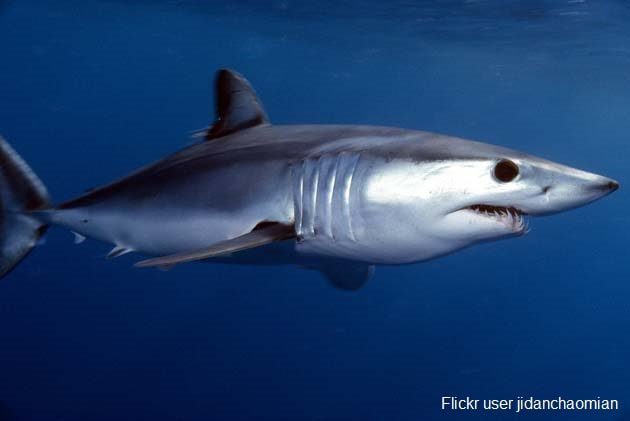
Basking shark (Cetorhinus maximus)
This species is the second largest shark in the world, after the whale shark. They can be found in cool and temperate oceans around the world in both hemispheres. In Canada, they are a more common sighting off of the Atlantic coast on the continental shelves; however, there are rare occurrences off the Pacific coast. Much like whale sharks, basking sharks are filter-feeders, eating tiny plankton floating along the upper layers of the water column.
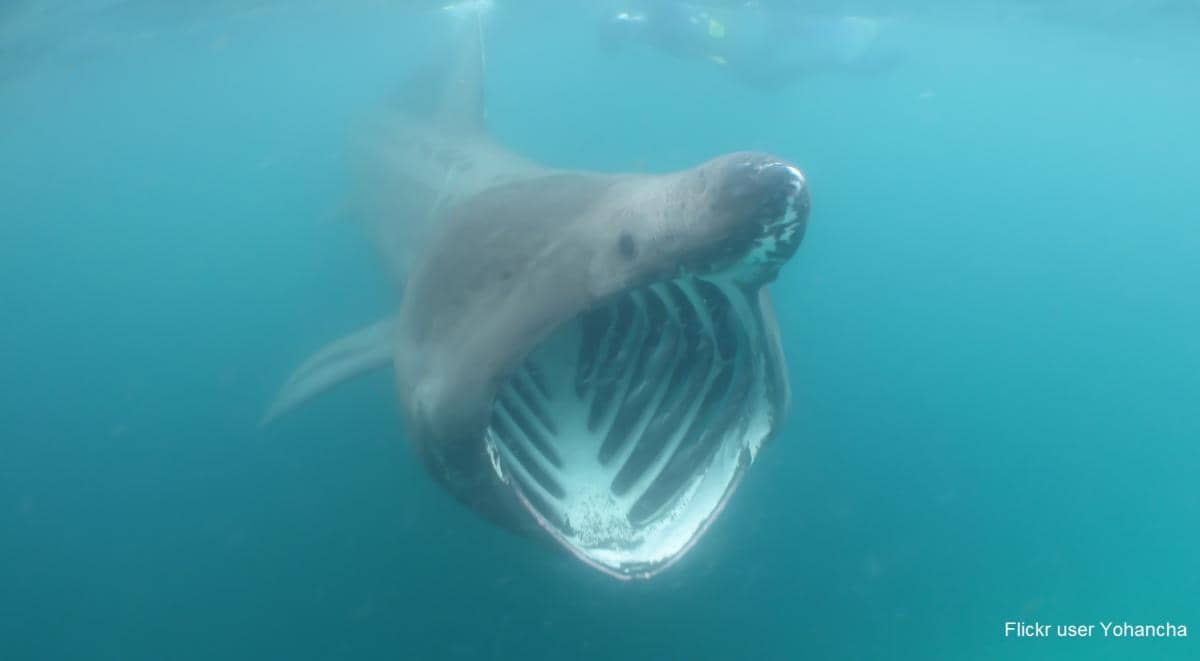
Black dogfish (Centroscyllium fabricii)
Black dogfish are another relatively small, deep-water shark that are found in the North and South Atlantic at depths of up to 1,600 meters. It is thought that they may even be able to produce their own light through a process called bioluminescence. As their name suggests, they are almost completely black, helpingto camouflage them in their deep-water habitats. Much like their cousin, the spiny dogfish, black dogfish also have venom-producing spines originating at the front of both of their dorsal fins. The black dogfish’ spines, however, are white, which stands out in stark contrast to their sleek, black body.
Bluntnose sixgill shark (Hexanchus griseus)
The bluntnose sixgill shark is widely distributed in tropical and temperate seas around the world. In Canada, they are most commonly seen off of the coast of British Columbia. While most sharks have five gill slits, as their name suggests, the bluntnose sixgill shark actually has six gill slits. This trait is common in more prehistoric shark species. Other traits that bluntnose sixgill sharks possess that are considered to be more ancient include the location of the dorsal fin close to the tail and the presence of a translucent eyelid.
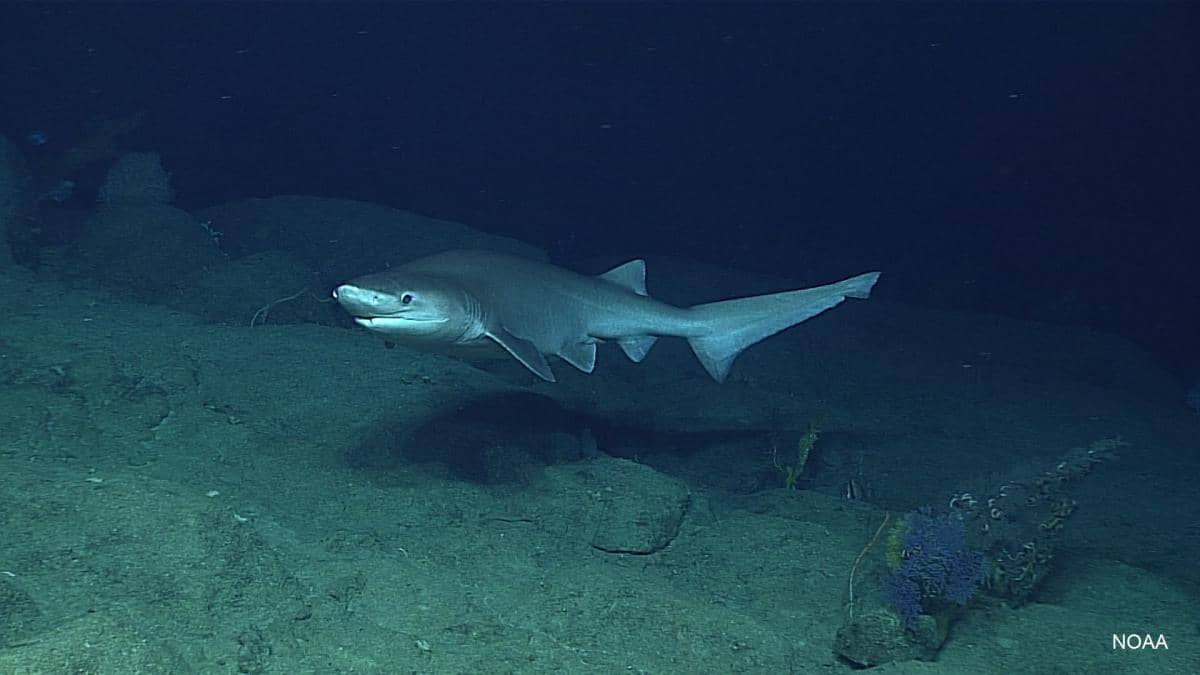
Pacific sleeper shark (Somniosus pacificus)
Pacific sleeper sharks are only found in the North Pacific, from Japan to the Bering and Chukchi Seas down to California. They are closely related to Greenland sharks, with both being considered very slow moving, cold, deep-water species. They are scavengers, using suction and their sharp cutting teeth to feed on carcasses on the ocean floor. Pacific sleeper sharks are frequently seen in small groups when feeding, a trait common among scavenger species as it helps them to find more food.
Brown catshark (Appisturus brunneus)
Brown catsharks are found in the Eastern Pacific from Alaska south to Mexico, with some sightings in Panama, Ecuador and Peru. They are small, deep-water sharks that are believed to be a solitary, nocturnal species. Not much is known about brown catsharks due to their elusive behaviour and deep-water habitats.
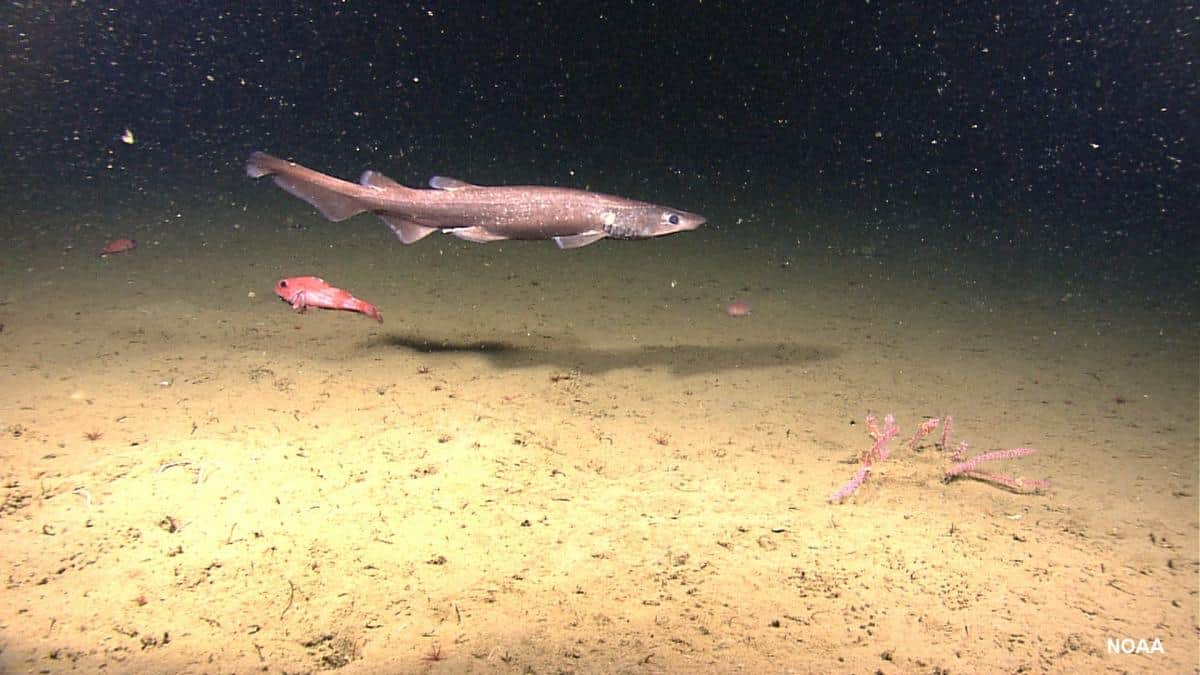
Tope shark (Galeorhinus galeus)
The tope shark can be found in temperate waters around the world except in the Northwest Pacific and the Northwest Atlantic. In Canada, you can find them off of the Pacific coast in British Columbia. They are a slender, small- to medium-sized shark and commonly feed on schools of fish such as cod, herring, sardines and whiting. They are a highly migratory schooling species and are able to travel more than 56 kilometers (35 miles) in one day.
Salmon shark (Lamna ditropis)
You can find salmon sharks throughout subarctic and temperate waters of the North Pacific, where they are common in waters between 2.5 and 24 degrees Celsius. They are very similar in size and shape to great white sharks, but unlike great whites they are much darker and are covered in dark blotches on their white underbelly. They are named after their favourite food, Pacific salmon, but they are opportunistic feeders and will eat most bony fish.

